So since I got these alpaca fleeces, I've been working on prepping them and spinning them. After all, there's a lot more to do with fiber than just let it sit in its bag looking all soft and pretty! As I spun my first skein of Vanilla Bean's fiber, I kept a part of each stage of preparation, to show you what it looks like as fiber goes from fluffy alpaca clouds to spun yarn to knitted object.
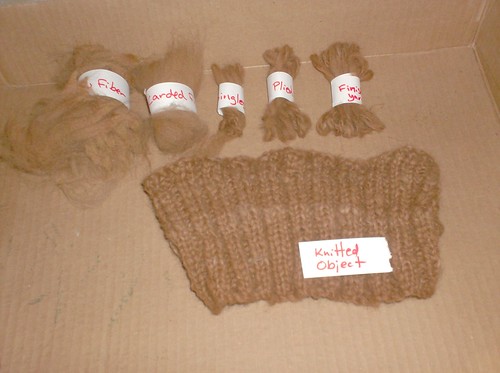
Six stages are represented here: raw fiber, a carded rolag, singles, plied yarn, finished yarn, and a knitted object.
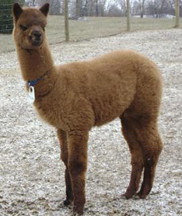
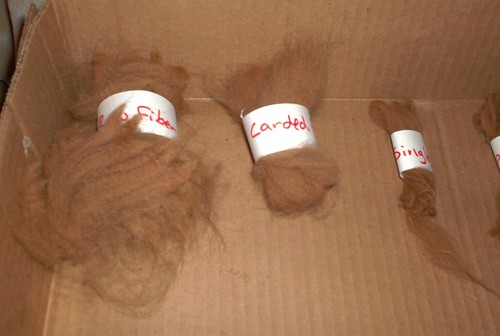
You start with the raw fiber, right off the animal. It naturally separates somewhat into locks, but for the most part it's fluid and soft and will fly away everywhere. You could spin it from this stage, but it would be a pretty lumpy-bumpy yarn.
Next, you card the fiber into rolags. There are several other methods of fiber prep: combing into top, drumcarding into batts, drafting into roving, but this is the simplest way for a novice spinner. I use dog flicker brushes that you can find at any pet supply store on the cheap - there are special hand cards that are larger, but also much more expensive.
Carding aligns the fibers so they are easier to spin. When you spin the fiber from your rolag, you get singles yarn. Singles can be used as yarn - like a 1-ply yarn such as Noro or Malabrigo worsted. However, singles are prone to breakage and not very hard-wearing, and they sometimes have a tendency to bias in knitting. Therefore, most yarns will be plied.
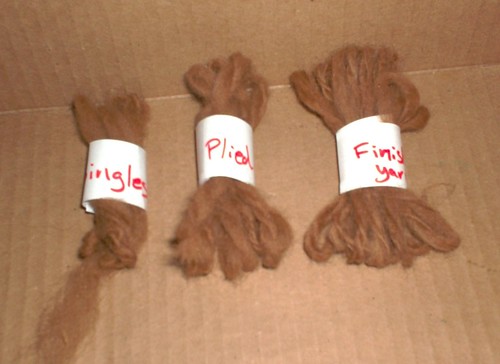
Plied yarn looks a lot more like yarn! In this yarn there are two plies twisted together. I actually plied this from a single ball of yarn, taking one ply from the center of the ball, and one from the outside - so one long strand of singles became a plied yarn of half that length.
Finally, after plying and washing, we have a finished yarn. Your finished yarn will look similar to the plied yarn, but it has undergone the finishing process. Finishing a skein of handspun is a lot like blocking a knitted object - it makes it look more polished, evens out the twist, and just overall improves the look. In fibers like alpaca and mohair, it may also bring out a halo in your yarn. Finishing consists of washing, "whacking" the yarn, and then drying it.
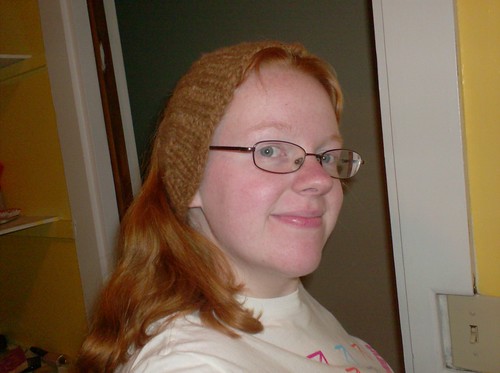
And of course, the last phase is the Finished Object! This is a Calorimetry from Knitty, and it only took 45 yards of handspun yarn. I knit it in about two hours. It was a super-quick project, and the finished object is soft and warm - though it will probably stretch out with wear, as alpaca fiber isn't very springy or elastic like wool is.
~Joyuna

 The Grateful Crane Shawl
The Grateful Crane Shawl Elven Slippers
Elven Slippers Russell Square Mitts
Russell Square Mitts Russell Square Tam
Russell Square Tam iTouch Jumper
iTouch Jumper Twisty Wristband
Twisty Wristband Mawata Pulsewarmers
Mawata Pulsewarmers
This is great. I've been wanting to get into spinning, but have only gotten to the collecting links section of events. I can't help it that I'm lazy and a wee bit broke. Also, I have to say that your Party Time yarn on Etsy is gorgeous.
ReplyDeletehttp://fathippycrafts.wordpress.com/
Sorry about the link. I couldn't figure out the openid thing for my wordpress blog. Meh.
ReplyDelete